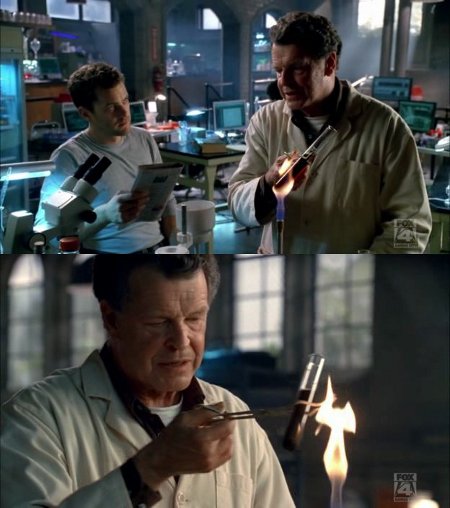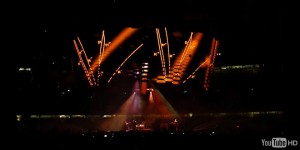Walter Bishop from the TV show Fringe really is a mad scientist.

Why Walter is a Mad Scientist:
- He’s heating a test tube with his Bunsen burner set on a yellow safety flame.
- He’s holding the test tube with a pair of tongs, not a test tube holder.
- He’s not wearing safety goggles.
The yellow flame comes from incomplete combustion of a hydrocarbon fuel (in this case natural gas), resulting in the production of soot; if this soot is hot enough it will glow, producing the characteristic colour. Heating a test tube with a yellow flame will leave the test tube covered in a layer of this soot that will insulate the contents from the heat. It could also lead to contamination.
When using tongs it’s very easy to accidentally apply too much force and crack the test tube; test tube holders have the advantage that they “fail safe” – loosening your grip doesn’t result in the test tube sliding out, you have to push to release the test tube, not to hold it.
My issue with the safety goggles is, I hope, obvious.
